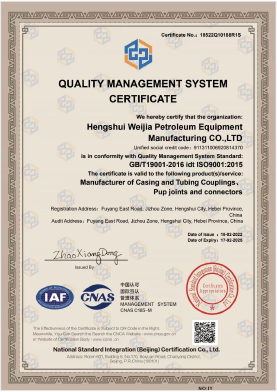- Afrikaans
- Albanian
- Amharic
- Arabic
- Armenian
- Azerbaijani
- Basque
- Belarusian
- Bengali
- Bosnian
- Bulgarian
- Catalan
- Cebuano
- Corsican
- Croatian
- Czech
- Danish
- Dutch
- English
- Esperanto
- Estonian
- Finnish
- French
- Frisian
- Galician
- Georgian
- German
- Greek
- Gujarati
- Haitian Creole
- hausa
- hawaiian
- Hebrew
- Hindi
- Miao
- Hungarian
- Icelandic
- igbo
- Indonesian
- irish
- Italian
- Japanese
- Javanese
- Kannada
- kazakh
- Khmer
- Rwandese
- Korean
- Kurdish
- Kyrgyz
- Lao
- Latin
- Latvian
- Lithuanian
- Luxembourgish
- Macedonian
- Malgashi
- Malay
- Malayalam
- Maltese
- Maori
- Marathi
- Mongolian
- Myanmar
- Nepali
- Norwegian
- Norwegian
- Occitan
- Pashto
- Persian
- Polish
- Portuguese
- Punjabi
- Romanian
- Russian
- Samoan
- Scottish Gaelic
- Serbian
- Sesotho
- Shona
- Sindhi
- Sinhala
- Slovak
- Slovenian
- Somali
- Spanish
- Sundanese
- Swahili
- Swedish
- Tagalog
- Tajik
- Tamil
- Tatar
- Telugu
- Thai
- Turkish
- Turkmen
- Ukrainian
- Urdu
- Uighur
- Uzbek
- Vietnamese
- Welsh
- Bantu
- Yiddish
- Yoruba
- Zulu
Bull Plug Pressure Rating Guidelines and Considerations for Optimal Performance
Understanding Bull Plug Pressure Ratings Importance and Applications
In various industrial applications, the safety and efficiency of operations heavily rely on understanding and correctly applying pressure ratings for fittings and plugs, particularly bull plugs. Bull plugs are specialized fittings used to seal off the ends of pipes and essential components in systems that manage pressure, such as oil, gas, and chemical industries. The pressure rating of a bull plug is crucial in ensuring that it can withstand operational pressures without leaking or failing.
What is a Bull Plug?
A bull plug is a type of closure fitting designed to fit snugly into the end of a pipe or a fitting to prevent any fluid from escaping. These plugs come in various materials, such as stainless steel, brass, plastic, and other alloys, each tailored for specific applications. The design of a bull plug usually features a tapered or flat head, making it easy to install and remove. Other types of plugs exist, but the bull plug is distinguished by its robust design and ability to handle high pressure.
Importance of Pressure Ratings
Pressure ratings are essential for ensuring that equipment operates safely within its designed limits. Each bull plug comes with a specific pressure rating that indicates the maximum pressure the fitting can withstand without risk of failure. These ratings are determined by factors such as material composition, manufacturing processes, experiences with similar designs, and standardized testing methods.
When using bull plugs in pressure systems, it is crucial to select a plug with a pressure rating that matches or exceeds the operating pressure of the system. Failure to do so can result in catastrophic events, including leaks, equipment failure, or even explosions, particularly in high-stakes industries such as oil and gas.
Common Pressure Ratings
Pressure ratings for bull plugs typically range from low pressure (often rated around 150 psi for plastic materials) to high pressure (over 10,000 psi for specialized stainless steel plugs). The American National Standards Institute (ANSI) provides standards that classify pressure ratings into classes, such as Class 150, Class 300, and Class 600, among others. Each classification relates to the plug's ability to handle the pressure specified, with later classes indicating a higher withstand capacity.
bull plug pressure rating

Selecting the Right Bull Plug
Choosing the correct bull plug involves several considerations
1. Material Compatibility Ensure that the material used for the bull plug is compatible with the fluid or gas it will seal. For example, corrosive substances may require plugs made from special alloys or coatings.
2. Pressure Requirements Always check the operating pressure of the system and select a bull plug with a pressure rating that meets or exceeds this requirement.
3. Temperature Considerations Pressure ratings can vary significantly with temperature changes. Always consult the manufacturer’s specifications to understand the temperature range for the pressure rating.
4. Installation Procedure Improper installation can lead to mechanical failure, regardless of the pressure rating. Follow recommended procedures and use tools appropriately to ensure a reliable seal.
Conclusion
In summary, understanding bull plug pressure ratings is vital for anyone working with pressurized systems. The right bull plug can prevent accidents, improve operational efficiency, and ensure safety in various industrial environments. Paying close attention to material choice, pressure specifications, and installation best practices will go a long way in optimizing equipment performance and maintaining system integrity. As industries evolve and expand, the importance of detailed knowledge of pressure ratings will only continue to grow, underscoring the necessity for skilled professionals in the field.
-
Tubing Pup Joints: Essential Components for Oil and Gas OperationsNewsJul.10,2025
-
Pup Joints: Essential Components for Reliable Drilling OperationsNewsJul.10,2025
-
Pipe Couplings: Connecting Your World EfficientlyNewsJul.10,2025
-
Mastering Oilfield Operations with Quality Tubing and CasingNewsJul.10,2025
-
High-Quality Casing Couplings for Every NeedNewsJul.10,2025
-
Boost Your Drilling Efficiency with Premium Crossover Tools & Seating NipplesNewsJul.10,2025







